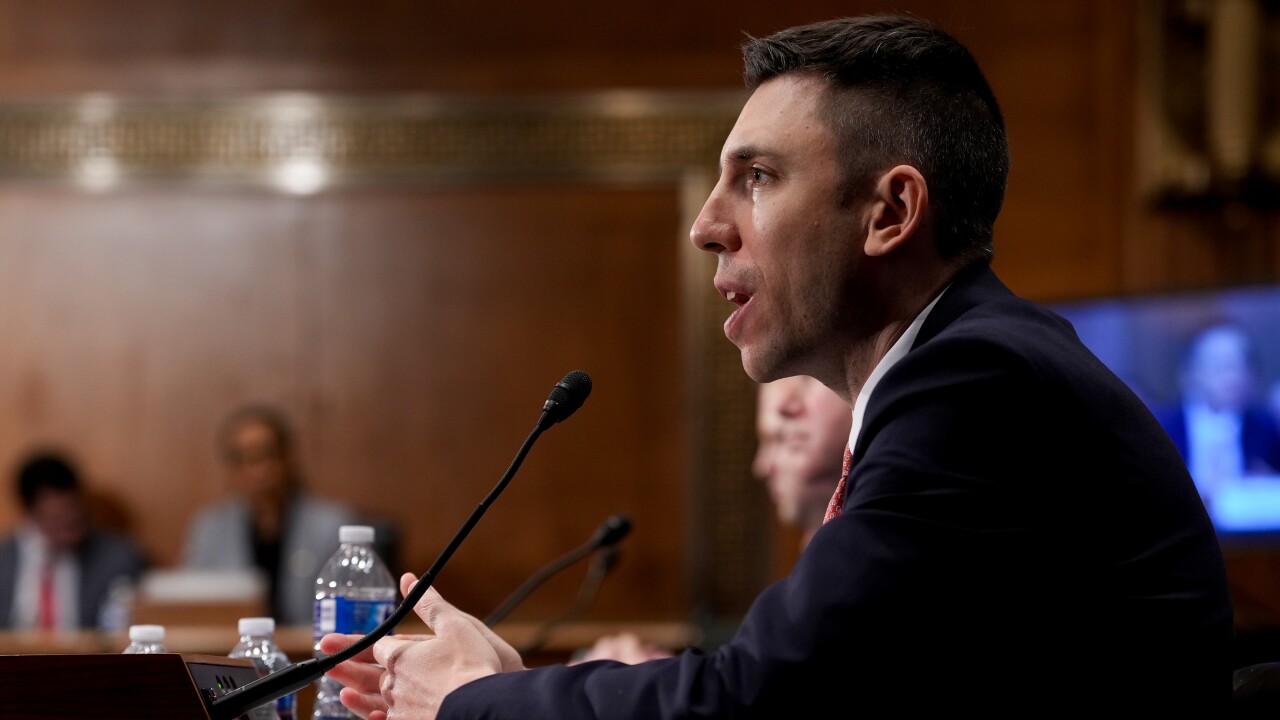John Stumpf made the case Wednesday that the peak of Wells Fargo and Co.'s credit troubles have nearly passed, leaving it with the scale and balance sheet necessary to outpace its rivals in an improving economy.
"In my 28 years at Wells Fargo, I believe 2009 was the best year we ever had in terms of positioning us for future growth," the chairman and CEO said on the San Francisco bank's fourth quarter earnings call.
Wells highlighted its accomplishments: It repaid the Troubled Asset Relief Program and bought out a retail brokerage joint venture with Prudential Financial. Reserves now stand at $25 billion, and deposits grew a healthy 4% in the fourth quarter even as its assets shrank. About $10 billion of mortgage-backed securities and other loans were brought back on the balance sheet without any apparent harm.
Wells is now healthy enough to lend, management says — it's just waiting for its customer base to become healthy enough to borrow.
"What differentiates us is that we've got a lot of liquidity, capital, and room on the balance sheet," Chief Financial Officer Howard Atkins said in an interview. "We think we have a better position than most to get more than our fair share of that loan demand."
Even in a slow economy, some analysts saw strong cross-selling statistics for Wells as a sign the bank can still grow.
"One thing they're actively working on is doing more business with the customers they have," says RBC Capital Markets analyst Joe Morford. "There are good, qualified borrowers out there."
Credit troubles still featured prominently in the quarter's earnings. Total net chargeoffs were $5.4 billion, up from $5.1 billion three months earlier. As with its peers, commercial real estate is Wells' main troublespot, with losses of $1.7 billion — up 16% from the third quarter.
But Wells says it is outpacing last quarter's prediction of a peak in its consumer losses by mid-year, and on the call, Atkins said it is "possible, emphasis on the word possible" that the worst of the consumer portfolio's losses have already passed. The $5.9 billion Wells spent on chargeoffs and an addition to reserves was lower than the previous quarter for the first time in a year.
The good news from Wells' consumer portfolio may say more about the bank's increased expectations for recovery on distressed loans rather than a broad improvement in borrower performance. Nonperforming assets in the bank's consumer portfolio increased 18% from the third quarter, to $12.7 billion, even as the pace of losses on nonperformers slowed.
The divergence in part stems from improvement in some of Wells' core markets, most notably California — a sharp drop in the loan-to-value ratio for Wells' Pick-a-Pay portfolio for the state is a partial reason for the improved expectations.
But "more of this has to do with what we've done to improve the portfolio," Atkins said in the interview, citing Wells' early writedowns and its nearly half a million modifications. "We took our lumps already."
Commercial loans are still more problematic. Commercial mortgage loan non-accruals rose to 3.80% of commercial mortgage loans, and commercial & CRE nonaccruals now stand at $11.6 billion. But 93% of that portfolio is secured, Wells reported, and more than a third of the non-accruals have already been written down by at least half, limiting the extent of future losses.
Barring an abrupt deterioration in the larger economy, Wells still expects commercial lending losses to peak in the second half.
Stumpf and Atkins argued that Wells can afford to be more discriminating than some of its competitors. To avoid interest rate risk, it hasn't stocked up its investment portfolio with residential mortgages, Stumpf said on Wednesday's call, despite a tempting 400-basis point spread. And its rapid deposit growth, while causing a short-term hit to its net interest margins, will play heavily into the bank's future success, Atkins said.
"We'll take that trade-off. We'll take near-term margin diminution because we're building the base to lend," Atkins said. "We know from experience that the first place the borrower will go is the bank with which they have the bulk of their relationships."





